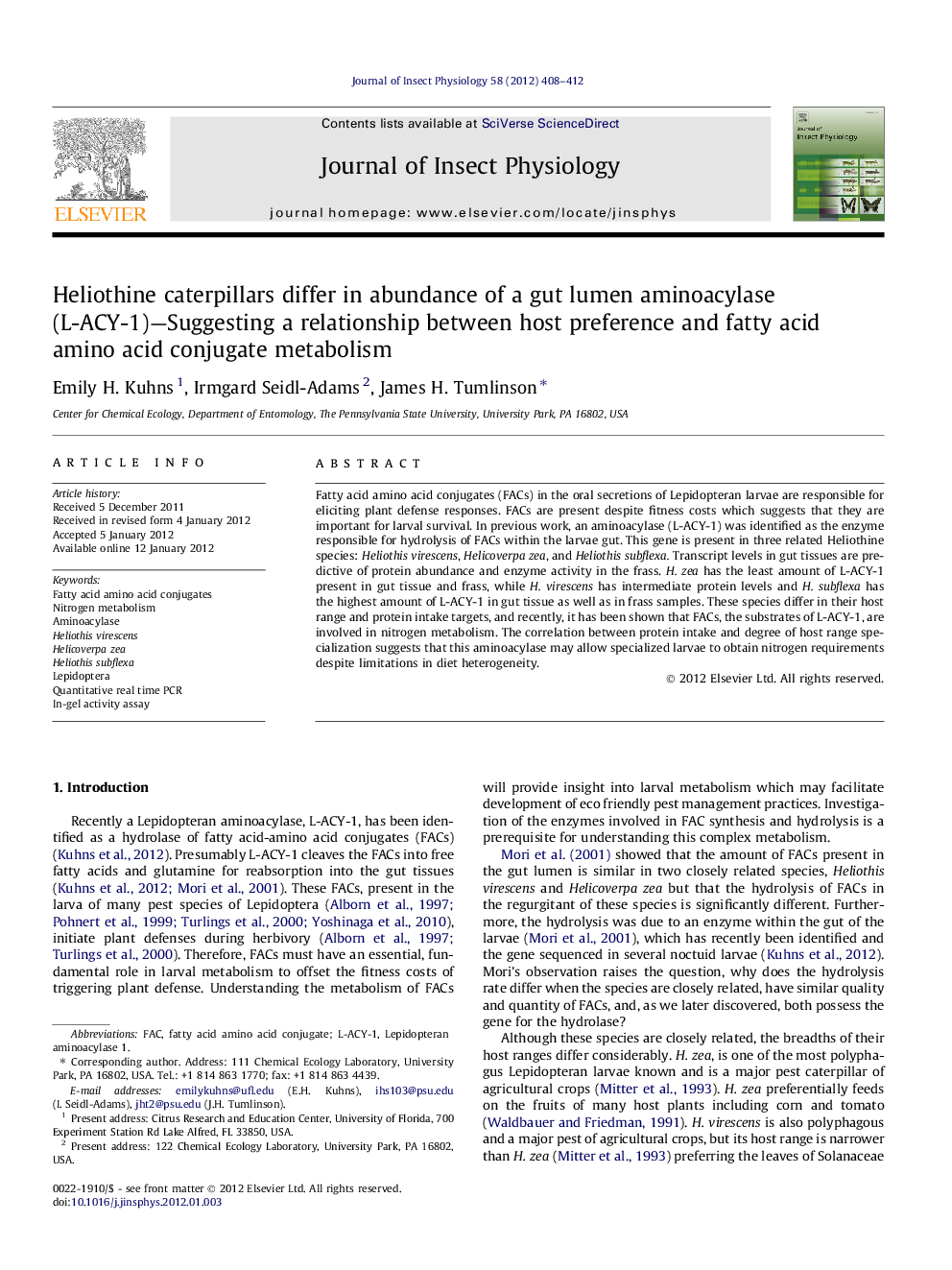| Article ID | Journal | Published Year | Pages | File Type |
|---|---|---|---|---|
| 2840674 | Journal of Insect Physiology | 2012 | 5 Pages |
Fatty acid amino acid conjugates (FACs) in the oral secretions of Lepidopteran larvae are responsible for eliciting plant defense responses. FACs are present despite fitness costs which suggests that they are important for larval survival. In previous work, an aminoacylase (L-ACY-1) was identified as the enzyme responsible for hydrolysis of FACs within the larvae gut. This gene is present in three related Heliothine species: Heliothis virescens, Helicoverpa zea, and Heliothis subflexa. Transcript levels in gut tissues are predictive of protein abundance and enzyme activity in the frass. H. zea has the least amount of L-ACY-1 present in gut tissue and frass, while H. virescens has intermediate protein levels and H. subflexa has the highest amount of L-ACY-1 in gut tissue as well as in frass samples. These species differ in their host range and protein intake targets, and recently, it has been shown that FACs, the substrates of L-ACY-1, are involved in nitrogen metabolism. The correlation between protein intake and degree of host range specialization suggests that this aminoacylase may allow specialized larvae to obtain nitrogen requirements despite limitations in diet heterogeneity.
Graphical abstractFigure optionsDownload full-size imageDownload as PowerPoint slideHighlights► Quantitative real time PCR was used to compare the abundance of mRNA of L-ACY-1 in three related Lepidopteran larvae. ► Transcript levels are higher in H. subflexa than H. zea and H. virescens. ► PAGE techniques suggest transcript levels reflect expression of protein. ► Banding patterns in native PAGE and Western blot suggest three isoforms differing in post translational modifications. ► Activity levels may be associated with host specificity and may play a role in obtaining target nutrient optimum intake.
